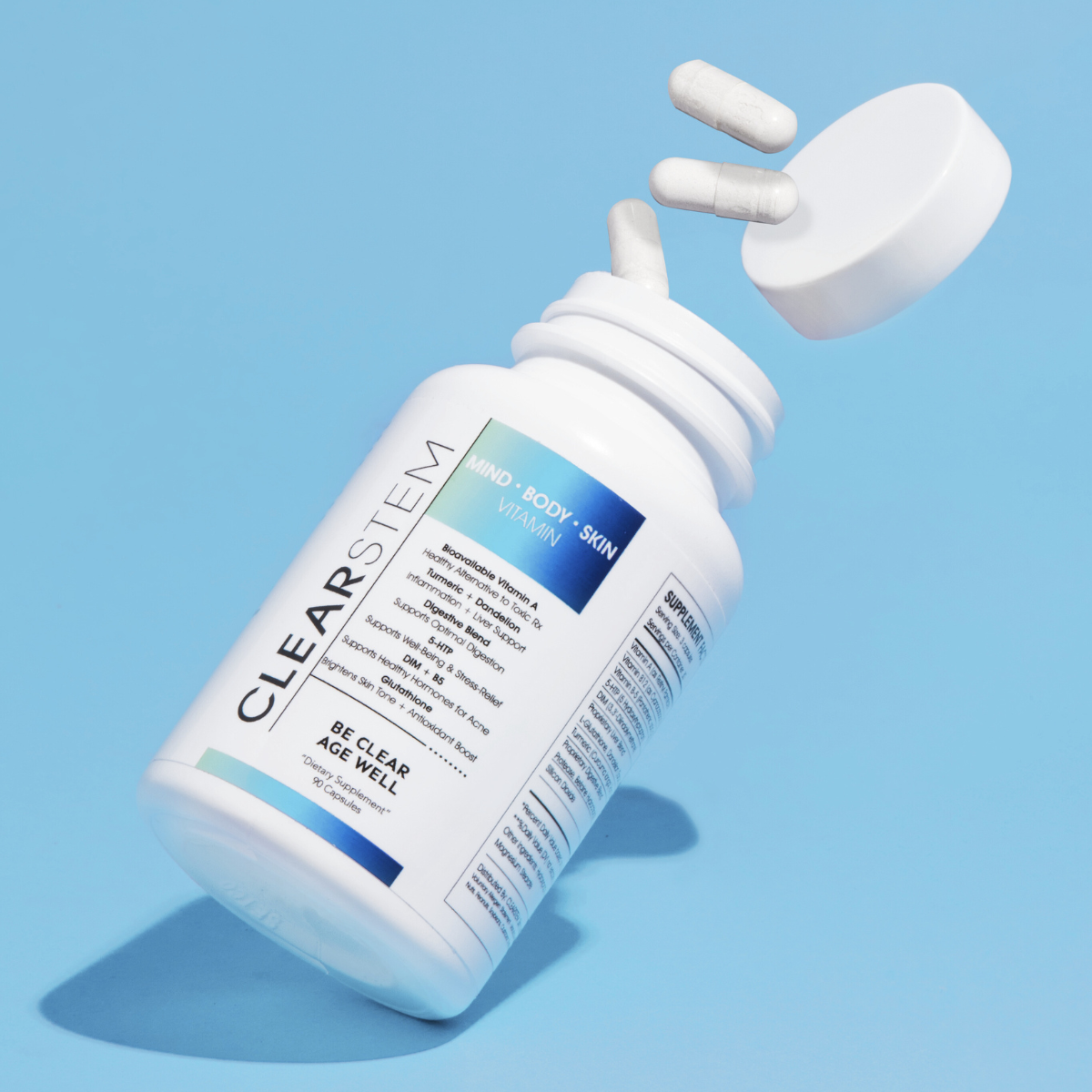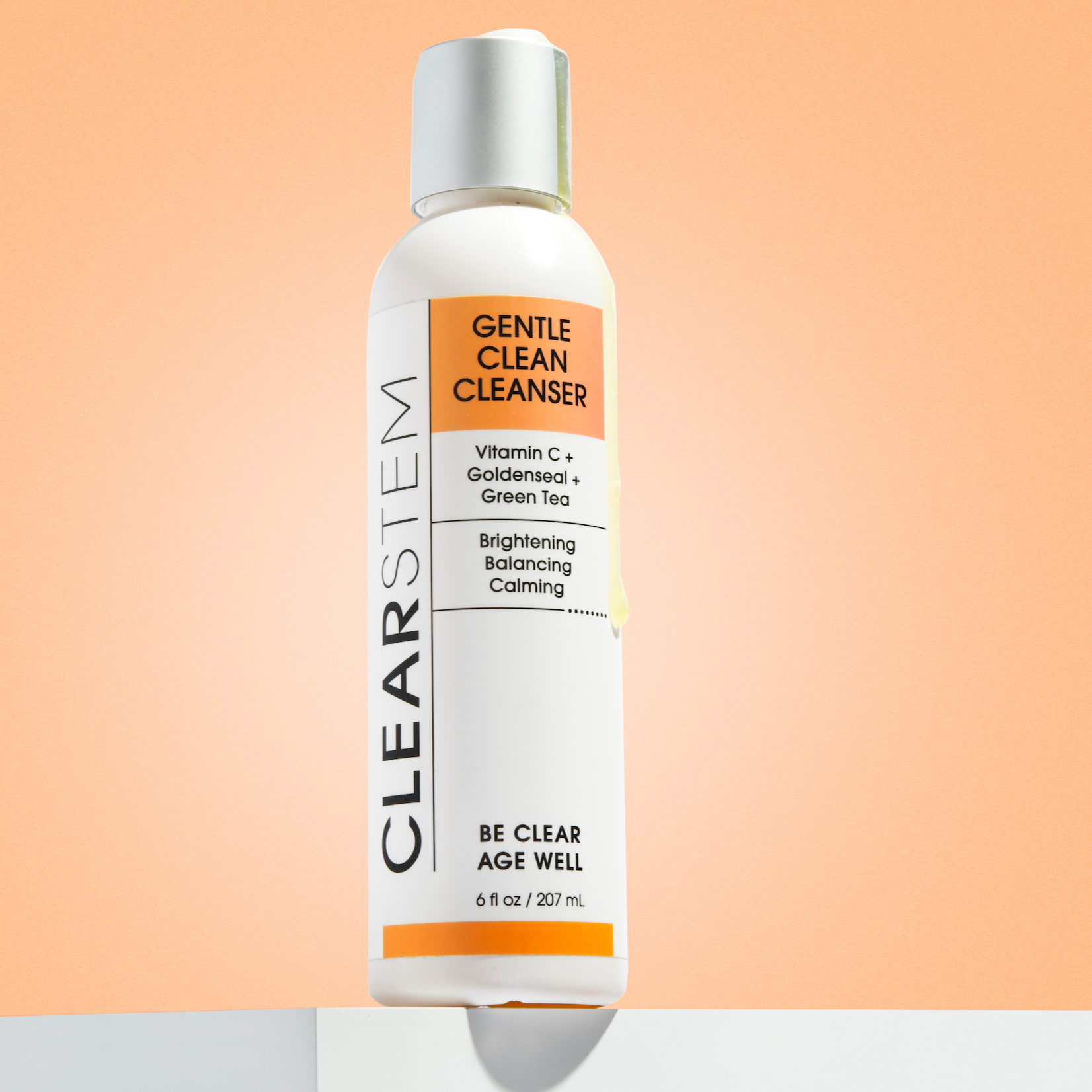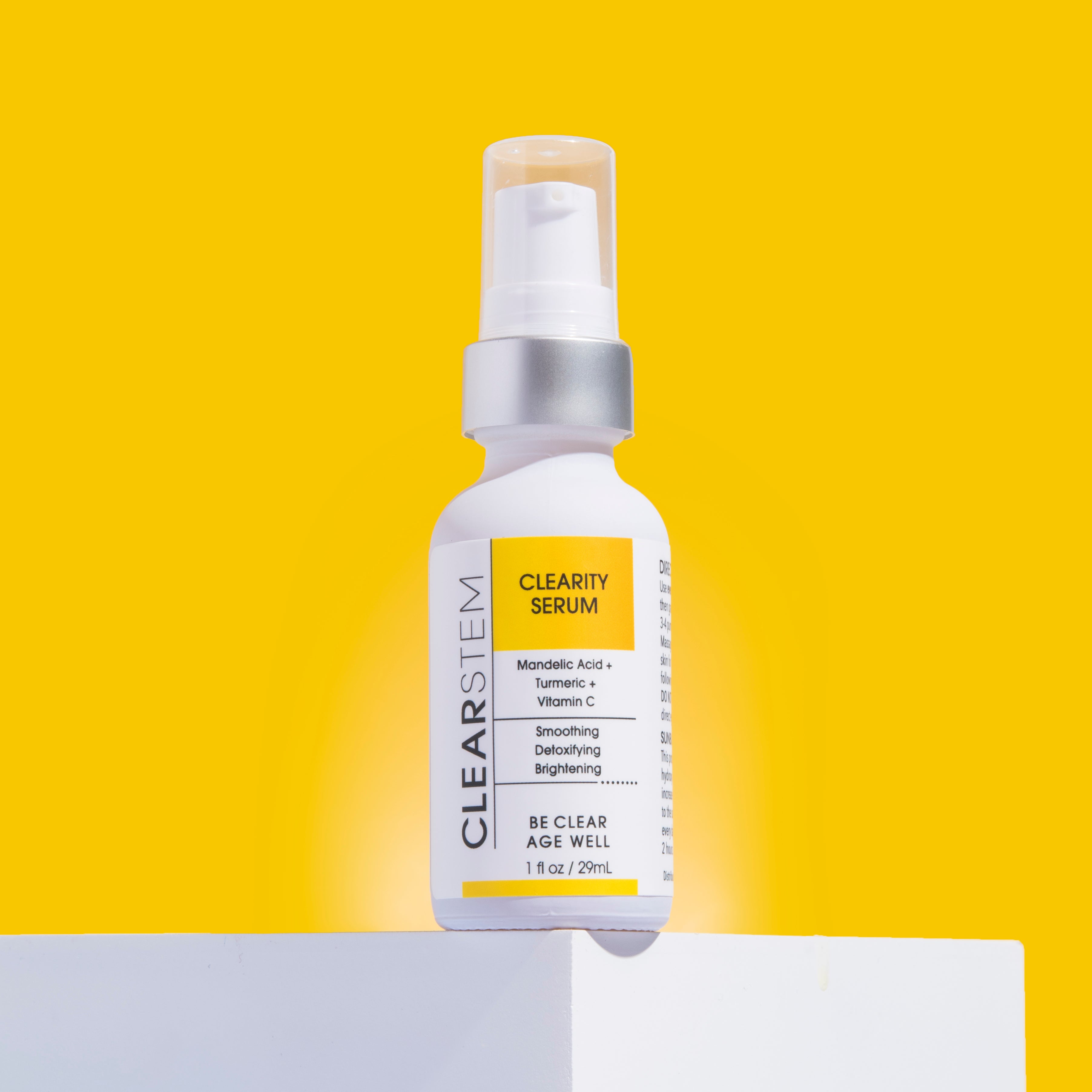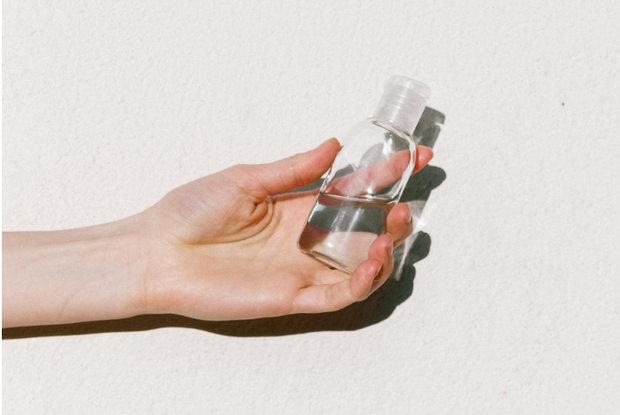Nothing feels quite as satisfying as hopping in the shower and working up a good lather to get the day’s dirt and grease out of your hair. But just as harsh soaps can quickly leave your skin dry and irritated, shampoos that contain harmful chemicals can wreak havoc on your delicate hair and overall scalp health.
Many people make the mistake of trusting shampoos that are misleadingly marketed to look “clean” and “natural.” But in reality, the chemicals listed on the ingredient lists of these trendy shampoos often tell a different, more sinister story.
In this guide, we’ll review the top ingredients to look out for in shampoo so you can rinse and repeat without regret. Read on to learn which chemicals in shampoo to avoid so you can create a toxin-free hair care routine that supports beautiful locks and a healthy scalp.
#1 Sulfates in Shampoo and Their Effects
Sulfates are a common ingredient used in personal care products due to their ability to develop a substantial cleansing foam.
The term sulfates refers to a group of salts that are produced naturally or synthetically, and the sulfates that are most commonly found in shampoos are:
- Sodium lauryl sulfate (SLS)
- Sodium lauryl ether sulfate (SLES)
Sulfates belong to a larger category of chemicals known as surfactants. This means they can lower the surface tension of the liquid they’re in, which allows you to work up a satisfying lather while scrubbing shampoo into your scalp.
Because of the benefits they bring to the table, sulfates have historically been a go-to ingredient for shampoo manufacturers.
But in recent years, hair experts have begun to question the use of these harmful ingredients in haircare products, looking deeper into what potential harm they could be causing while they sud up.
Potential Side Effects and Dangers
Have you ever used a particularly strong hand soap to wash your hands, only to feel like your skin was dry, tight, or completely dried out afterward?
Chances are that hand soap uses some harsh chemicals to achieve powerful cleansing properties at the expense of your skin’s moisture levels. The same principle applies when it comes to shampoos.
Sulfates are widely touted for their cleansing abilities, but hair is fragile, and much like your laundry delicates, it can’t stand up to being washed on a power cycle over and over again.
Sulfates can be effective at ridding your hair of dirt and oil, but unfortunately, they sometimes tend to work overtime, stripping your hair and scalp of the natural oil it actually needs.
#2 Parabens and Their Role in Shampoo Formulations
Parabens are a type of preservative commonly used to extend the shelf life of products and prevent the growth of bacteria and mold.
It can be a bit tricky to tell if parabens are in your hair products if you don’t know what to look for. That’s because you’ll need to search for ingredient names that end with “paraben,” such as:
- Methylparaben
- Propylparaben
- Butylparaben
- Ethylparaben
Parabens may positively impact the longevity of hair products, but these harmful ingredients also come with some serious drawbacks that any consumer should carefully consider.
Health Concerns and Alternatives to Parabens
Some evidence suggests that parabens can pose harmful consequences such as:
- Disrupting hormone balance
- Causing skin irritation
- Affecting reproductive health
- Instigating neurotoxicity
One of the main reasons that parabens have raised concerns in the personal care community is because they can act like the hormone estrogen in the body. Because of this capability, parabens can interfere with our natural reproductive and endocrine systems. Some scientists even assert that parabens can contribute to an increased risk of cancer.
With all of these health hazards in mind, it’s no wonder why many hair brands are now taking a step back from putting these toxic ingredients in their products.
#3 Synthetic Fragrances and Their Potential Harm
We all love a shampoo that smells fantastic every time you get a whiff of it throughout the day (and leaves an excellent impression when you hug your friends and loved ones).
However, there can be real ramifications attached to some fragrances found in hair products.
Many people think there’s no harm in putting synthetic fragrance blends in hair products because our hair is made up of dead cells. However, it’s important to remember that hair products like shampoo make contact with our skin, too.
For those with sensitive skin or allergies, shampoos that contain synthetic fragrances can trigger an allergic reaction and other bodily responses.
Allergic Reactions and Sensitivities
Synthetic fragrance blends can cause a variety of unwanted symptoms in individuals with sensitive skin, such as:
- Scalp irritation
- Inflammation
- Hair loss
They can also trigger allergies in some people, which can end up affecting patches of skin all over the body as a result of shampoo trickling down our skin in the shower. Some of the most common symptoms of shampoo allergies include:
- Red or scaly patches of skin
- Burning and itching sensations
- Blisters or swelling
Out of all the ingredients in this article, synthetic fragrances are the trickiest to find on product labels. That’s because the FDA classifies scent formulas as trade secrets and, therefore, does not require manufacturers to disclose their ingredient lists.
Therefore, if you see a shampoo bottle that has the generic term “fragrance” on it, you might want to steer clear of it, especially if you’re prone to allergies.
#4 DEA, TEA, and MEA: Harmful Surfactants in Shampoos
DEA, TEA, and MEA are ethanolamines that are commonly used in cosmetics and personal care products. These abbreviations refer to three famous members of this chemical family:
- Diethanolamine
- Triethanolamine
- Monoethanolamine
These ethanolamines function as surfactants and emulsifiers, helping to dissolve dirt, oil, and grease while creating extra foam and adjusting the acidity of different products.
But as you may have guessed, the use of these ethanolamines can pose some risks.
Health Risks Associated with These Surfactants
Unfortunately, DEA, TEA, and MEA have been linked to adverse health outcomes such as irritation to the:
- Skin
- Eyes
- Respiratory tract
In rare cases, laboratory experiments have demonstrated that exposure to high doses of DEA has the potential to cause liver cancers as well as precancerous changes in the skin and thyroid.
Furthermore, MEA and TEA can react with other chemicals in cosmetics to form carcinogenic nitrosamines.
For all these reasons, many people are choosing to avoid products that feature any of these three chemicals in their formula.
#5 Formaldehyde-Releasing Preservatives in Shampoos
Many personal care products contain preservatives that release a gas called formaldehyde.
These toxic chemicals help to prevent microbes from growing in water-based products like shampoos, but the small amounts of formaldehyde they release can quickly become problematic.
Be sure to look out for popular formaldehyde-releasing preservatives when you’re scanning a product’s ingredient list, such as:
- Quaternium-15
- Sodium hydroxymethylglycinate
- Imidazolidinyl urea
- Diazolidinyl urea
- Polyoxymethylene urea
Health Concerns and Safer Alternatives
Formaldehyde and formaldehyde-releasing preservatives have been linked to cancer and allergic skin reactions.
Additionally, exposure to high amounts of formaldehyde can cause serious issues such as:
- Dermatitis
- Hair loss
- Permanent skin sensitization
- Nose and eye irritation
- Asthma and breathing difficulty
When it comes to formaldehyde, it’s best to treat this chemical as your foe and say farewell to any hair products that might expose you to it.
Natural and Safe Alternatives in Shampoos
You don’t need to subject yourself to a lifetime of bad hair days just to stay healthy because not all shampoos are made with harmful ingredients.
Now that you’ve learned the answer to the question, what ingredients should you avoid in shampoo, you can finally start building a cleaner, safer hair care routine.
The key to maintaining the mane of your dreams without sacrificing your well-being is investing in shampoos formulated with responsible, safe, and clean practices.
To this end, look for shampoos that offer:
- Deep yet gentle cleansing – You can still enjoy that oh-so-satisfying clean scalp feeling without using a shampoo brand that strips your hair shaft of its natural oils.
- Naturally-sourced fragrances – You don’t have to give up delicious-smelling hair if you happen to be allergic to synthetic fragrances. Simply invest in a shampoo that derives a pleasant natural scent from ingredients like essential oils.
- Ingredients you can trust – Until you find your new favorite shampoo, you might have to put your reading glasses on and scrutinize a few labels to make sure you’re not taking any risks with dangerous ingredients.
Our Restorative Shampoo is specially formulated to offer all these benefits and more.
It’s made with powerful plant-based cleansers that gently rinse away dirt and debris without stripping your hair of its natural oil. It utilizes the aromatherapeutic scent of Mentha Spicata (Spearmint) Leaf Oil to smell incredible and soothe the scalp simultaneously.
This dermatologist-tested shampoo solution is completely safe for sensitive skin and free of harmful ingredients like sulfates and SLS.
With botanical extracts, essential oils, and even hydrolyzed castor oil included in its advanced formulation, our Restorative Shampoo helps boost hair health by providing lightweight moisture, volume, and supreme shine.
Skin Benefits of Using an Acne-Safe Shampoo
Our non-comedogenic shampoo is a game-changer for those looking to maintain hair health without the worry of acne breakouts. Infused with spearmint oil, rosemary oil, and castor oil, it's formulated to nourish your hair and scalp while ensuring your pores remain clear. This careful blend of ingredients supports strong, healthy hair growth, and minimizes the risk of forehead and back acne, making it a perfect addition to your skincare and hair care regimen.
Find Safe Hair Care Solutions at CLEARSTEM
Our team of dermatology experts here at CLEARSTEM has always been dedicated to the mission of creating clean, safe products with the highest standard of ingredient integrity.
Now, we’ve chosen to extend that mission to the world of non-comedogenic hair care. You deserve to enjoy strong, healthy hair that brings you confidence without sacrificing your safety in the process. We can’t wait for you to experience the difference of our Restorative Shampoo, a product that will leave you feeling great about your hair and your health.
Sources:
FDA. Parabens in Cosmetics. https://www.fda.gov/cosmetics/cosmetic-ingredients/parabens-cosmetics
Genesis Career College. 8 Ingredients to Avoid in Your Shampoo and Conditioner. https://www.genesiscareer.edu/8-ingredients-to-avoid-in-your-shampoo-and-conditioner/
EWG. What Are Parabens, and Why Don’t They Belong in Cosmetics? https://www.ewg.org/what-are-parabens
Health Digest. The One Ingredient That Shouldn't Be In Your Shampoo. https://www.healthdigest.com/285333/the-one-ingredient-that-shouldnt-be-in-your-shampoo/#
National Library of Medicine. Toxicology of mono-, di-, and triethanolamine. https://pubmed.ncbi.nlm.nih.gov/8956558/#
David Suzuki Foundation. The Dirty Dozen: DEA-related ingredients. https://davidsuzuki.org/living-green/the-dirty-dozen-dea-related-ingredients/
Campaign for Safe Cosmetics. Formaldehyde And Formaldehyde-Releasing Preservatives. https://www.safecosmetics.org/chemicals/formaldehyde/
Australian Competition & Consumer Commission. Formaldehyde in cosmetics including hair products. https://www.accc.gov.au/system/files/Formaldehyde%20in%20cosmetics%20including%20hair%20products%20-%20bulletin.pdf










